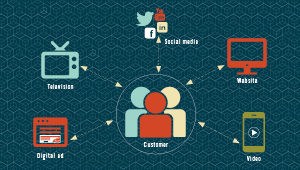Buzzword, buzzword, buzzword.

Data-driven attribution models is not a new concept, but it seems to have had a resurgence in the last year. Facebook and Google Analytics 360 loudly claim to have their own models to track a conversion. Which is all great, except what is data-driven attribution?
What is an attribution model?
Data attribution isn’t a new concept. You have likely experienced it many times as a consumer. Think about the last time you watched TV. You may have seen an ad for a product. After the commercial you went to their website and clicked on different product pages. You may have watched a video or read a product review. A day or two later you may have bought the product.
As marketers, we’re interested in all those steps you took and which ones led you to purchase a product. Was it the commercial? Was it the online reviews you read, or the competitor analysis you did?
In most cases, the path to buying a product is not a straight road. Some or all of the steps above could have been attributed (ah … see what I did there) to you buying the product. Data attribution is identifying those actions or events that contributed to a desired behavior and assigning a value to each one.
How can data-driven attribution models be used?
Marketers are interested in what or who gets the credit for selling the product. More and more we are being asked to connect marketing tactics to the sales funnel.
The question we all want answered: What drove you to buy? Was it the commercial? Brand loyalty? The sales team? Was it a direct mail piece? Which creative did you see? Was it all the above?
We can’t ask every customer, nor would we expect everyone to remember exactly what drove them to buy. We can, however, collect enough data to create data-driven attribution models.
Using marketing attribution models, we can analyze the data to see what was most engaging, or where they spent most of their time. We can see which path the consumer took to buy. Conversely, we can analyze the data to see what tactics did not work.
Why use a data attribution model?
Not all consumers are alike, and each path they take to buy differs. Similarly, there are different types of attribution models. Choose a model that best fits your needs. Check out this attribution model resource from Google to learn about the different types of models and when and how to use them.
Data attribution models allow marketers to better understand the value and importance of different marketing tactics.
For instance, there may be a strategy you are using that has a high cost per click (CPC). By using a marketing attribution model, you may see that this tactic sends the consumer to a different path to buy. Therefore, rather than removing the tactic because of its high CPC, you will likely keep it due to its high influence for another tactic.
Attribution models show us the entire map of the consumer’s path to purchase, even the detours. The more we understand about their behaviors, the smarter we become about marketing to them.


 By Two Rivers Marketing
By Two Rivers Marketing
 By Ashley Netzer
By Ashley Netzer